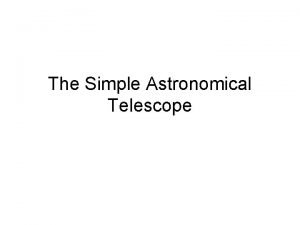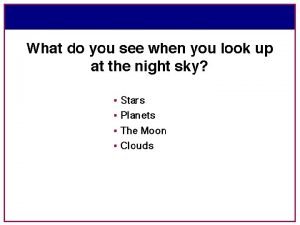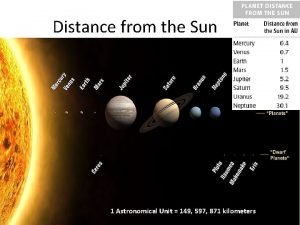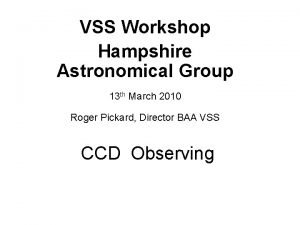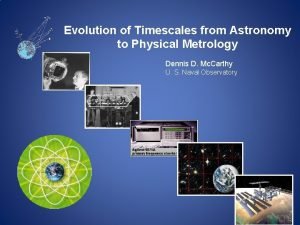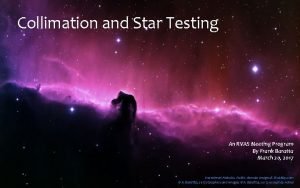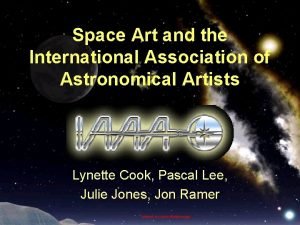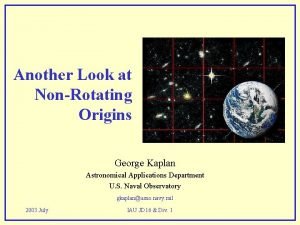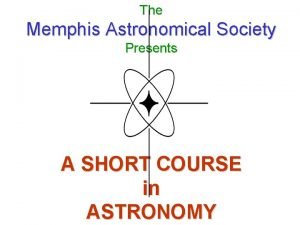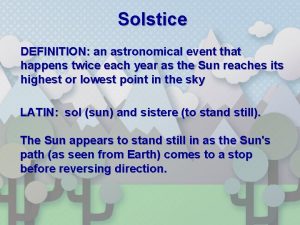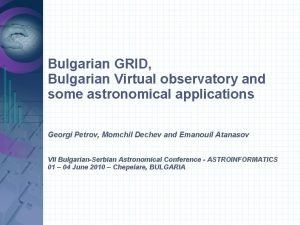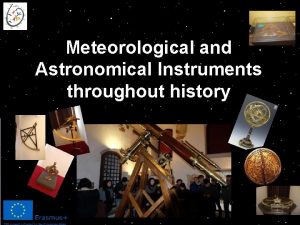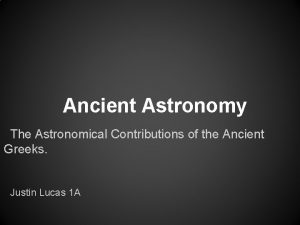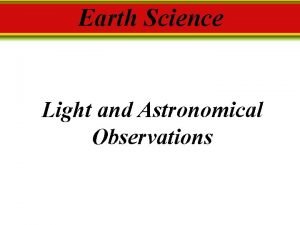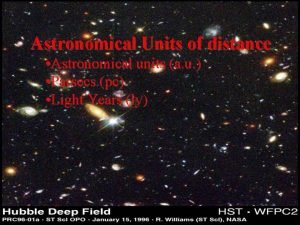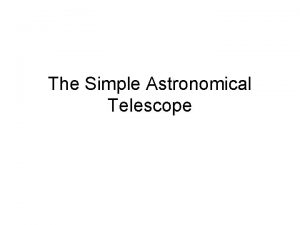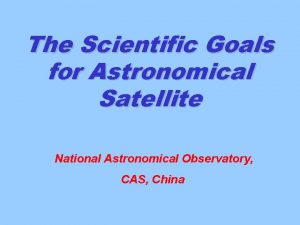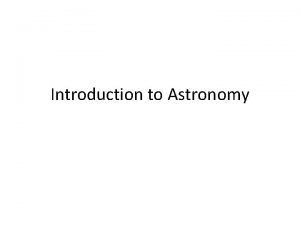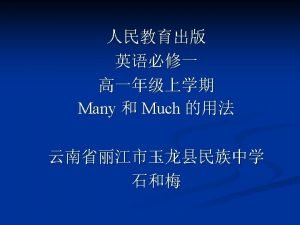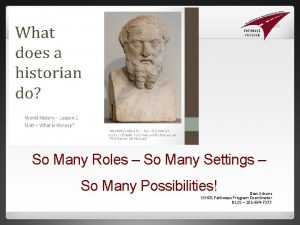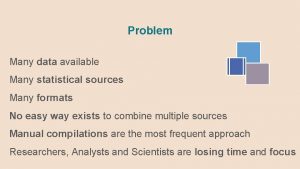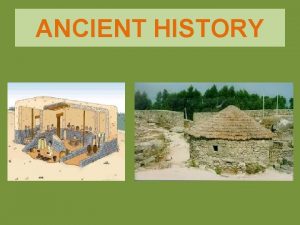Astronomical History A Ancient History 1 Many ancient


















- Slides: 18

Astronomical History

A. Ancient History 1. Many ancient cultures were interested in the changing night sky. Basic types of ancient observatories included simple markers of stone or fancy tombs. Kerr Batch, Gambia

2. Europe a. About 900 megalithic stone structures are found in the British Isles. b. Stonehenge is the largest and most well known c. Newgrange has windows into underground chambers that shine light on the solstices.

3. North American Indians (New Mexico) a. The Sun Dagger – carved out of rock to track the Sun, Moon and seasons.

b. Big Horn Medicine Mounds (Wyoming) (1) Created to keep track of the seasons and the brightest stars. (2) About 50 similar circles exist. The oldest is in Canada (built about 2500 BC - the age of the Egyptian pyramids, for comparison).

Caracol Tower: observatory of the stars and planets. 4. Central America: Maya Astronomy a. El Castillo in Chichen Izta 91 steps on four sides plus the platform on top totals 365 – one for each day in Haab Calendar.

South America: The Incan Empire The Inca: from the 12 th to 15 th centuries. Their most crucial events involved the rising and setting of the sun, moon, and stars. Astronomy was very important for the Inca civilization, partly due to the importance of agriculture.

b. Aztec Ruins (1) Templo Mayor in Tenochtitlan, eastern Mexico (2) Festivals occurred as the sun rose between two temples at the equinox. (Temple of the Moon and Temple of the Sun).

5. Egyptian a. Temple at Karnak 1. Certain alignments correspond to summer solstice sunset and winter solstice sunrise. b. Pyramid of Khufu at Giza 1. Shafts from the King's chamber point to: (1) Location of Polaris 5000 years ago (2) The pyramid is also aligned perfectly N-S and E-W.

6. Chinese a. A tower was built in 1270 AD to measure the sun's shadow. b. The shadow of the tower was shortest at noon, and the very shortest at the summer solstice. c. This machine was made to predict comets.

The Greeks 1. GEOCENTRIC MODEL: Earth centered within a celestial sphere. a. Aristotle: 350 BC; concluded that the Earth is round. b. Eratosthenes: 200 BC; calculated the Earth’s circumference within 675 km the actual figure. c. Hipparchus: 200 BC; created a star catalog and predicted eclipses. d. Ptolemy: 140 AD; predicted planetary motion including retrograde (backward appearing) motion.


2. HELIOCENTRIC MODEL: Sun centered within a solar system. a. Aristarchus: 300 BC; accurately calculated astronomical distances.

b. Nicolaus Copernicus: (Polish) 1500 AD; Concluded that Earth is a planet in a heliocentric solar system.

c. Tycho Brahe: (Danish) 1600 AD; made precise observations without telescopes.

d. Johannes Kepler (Danish) 1600 AD; Brahe’s assistant who developed laws of planetary motion. 1 st Law: Planets travel in elliptical paths around the Sun. 2 nd Law: The speed of planets in orbit varies with their distance to the Sun. 3 rd Law: The orbital period of a planet depends on its distance from the Sun.

e. Galileo Galilei: (Italian) 1600 AD; his great telescopes led to major discoveries. He used a telescope to make observations of the Sun, the Moon and the distant planets Saturn and Jupiter.

f. Sir Isaac Newton Developed the Law of Universal Gravitation. 1. All objects are attracted to one another. Those with greater mass have greater attractive forces. 2. Gravitational force decreases with distance. 3. Gravity keeps objects in orbit.
 What is angular magnification
What is angular magnification Sc002 constellation chart
Sc002 constellation chart When it winter
When it winter Hampshire astronomical group
Hampshire astronomical group Astronomical time scale
Astronomical time scale Star testing telescopes
Star testing telescopes International association of astronomical artists
International association of astronomical artists Guildford astronomical society
Guildford astronomical society Astronomical applications department
Astronomical applications department Memphis astronomical society
Memphis astronomical society Astronomical event that occurs twice a year
Astronomical event that occurs twice a year Astronomical
Astronomical Astronomical clock lyon france
Astronomical clock lyon france Pictures of ancient and modern means of communication
Pictures of ancient and modern means of communication Ancient india vs ancient china
Ancient india vs ancient china Many sellers and many buyers
Many sellers and many buyers Er diagram many to many
Er diagram many to many Convert conceptual model to logical model
Convert conceptual model to logical model What is unary relationship in dbms
What is unary relationship in dbms
